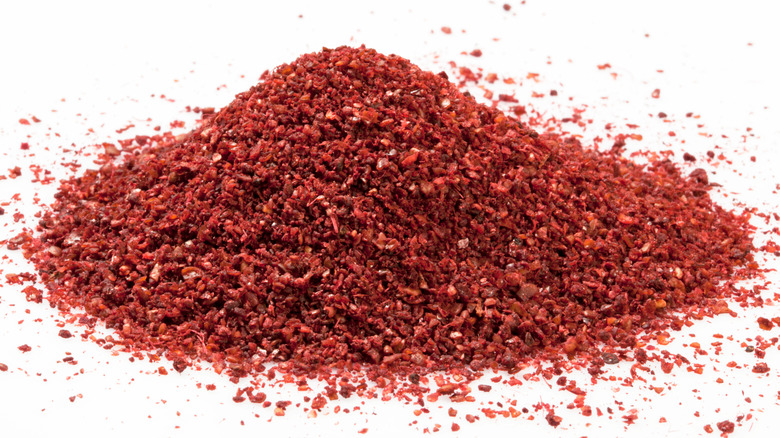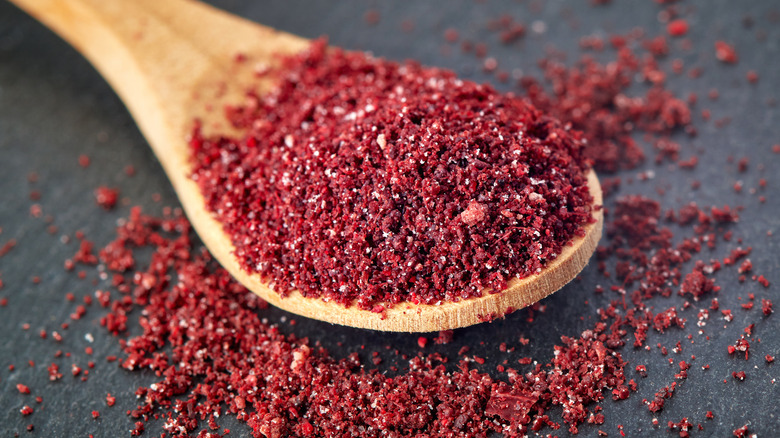Here's What You Can Substitute For Sumac
You're quickly scanning through a recipe when you notice a spice that you may not have in your collection: sumac. The seasoning is popular in the Middle East, and comes in the form of red berries ground into a coarse powder, or more rarely, whole berries (via The Spruce Eats). The signature red hue is also responsible for the spice's name, which comes from the Aramaic word summaq and translates to "dark red."
Though the vibrant red shade may lead you to think of similarly-colored spices like paprika or cayenne, Masterclass explains sumac actually has a flavor that's closer to lemon, with a mixture of acidity and a hint of fruitiness.
Seeing as not everyone has sumac in their spice rack, Spiceography has several suggestions for substituting sumac in a recipe, with the closest in flavor being lemon pepper seasoning. While lemon pepper is available in pre-mixed spice form, you can also easily whip up your own by combining lemon zest, salt, and pepper. The Rachael Ray Show also endorses this particular substitution for the zesty flavor of sumac.
If you're a big fan of Middle Eastern cuisine (or you simply have a well-stocked spice pantry), za'atar is also a decent substitute. Za'atar is a blend of spices, and sumac is one of the key ingredients — so, while it won't taste exactly the same, it can be close enough.
What dishes can you make with sumac?
If you think of sumac's flavor profile as similar to lemon, it likely comes as no surprise that the spice is incredibly versatile. Sumac is a natural pairing with all kinds of meats, and as chef Rachel Dow explained to Serious Eats, it's great for dry marinades where you want that acidic citrus flavor but don't want any liquid, as you'd get from lemon juice.
Given that it's a staple in many Middle Eastern dishes, you can also use sumac as one of the star ingredients in a dish like chicken kebabs or fattoush salad, or even add an extra zip to your favorite hummus recipe by incorporating a sprinkle of sumac (via Masterclass).
Finally, as with lemon, it can be taken in either a savory or a sweet direction. That's right — you can absolutely incorporate sumac in your desserts. As MyRecipes explains, many bakers turn to their spice cabinet to introduce a hint of earthiness or warmth, using dried spices such as ginger, cinnamon, nutmeg, or cardamom. When you're looking for a burst of tang to add freshness or even just a bit of depth of flavor to your dessert, instead of reaching for your usual lemon zest, try incorporating a sprinkle of sumac. Pastry chef Richard Capizzi tells Serious Eats he swears by sumac when making ganache, praising the way it balances out the other components of the creamy, chocolatey mixture.

